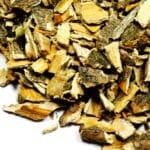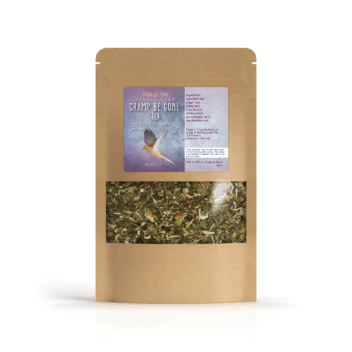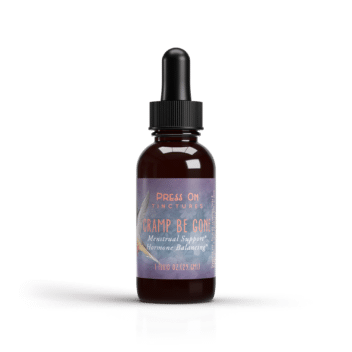
Cramp Bark in Herbal Medicine
Cramp Bark in Herbal Medicine
Cramp bark, scientifically known as Viburnum opulus, is a plant that has been used for centuries in traditional herbal medicine. Its name hints at its primary use – alleviating muscle cramps and spasms. In this article, we delve into the properties, benefits, and applications of cramp bark in herbal medicine.
Understanding Cramp Bark
Cramp bark is a deciduous shrub native to Europe, North America, and Asia. It is part of the Adoxaceae family and is recognized by its clusters of white flowers and red berries. However, the part of the plant most valued in herbal medicine is the bark itself.
The History of Cramp Bark
Historically, Native American tribes were among the first to utilize cramp bark for its medicinal properties. They discovered its effectiveness in treating cramps, particularly for women experiencing menstrual pain. Over time, its use spread to other cultures, where it found a place in herbal medicine traditions.
Botanical Characteristics
Cramp bark grows best in moist, well-drained soils and can often be found in woodlands and along riverbanks. The shrub can reach up to 15 feet in height and is characterized by its grayish-brown bark, which is harvested for medicinal purposes.
Cramp Bark Benefits
Cramp bark is known for its antispasmodic, anti-inflammatory, and sedative properties. These attributes make it a versatile herb in managing various health conditions.
Alleviating Muscle Cramps
As its name implies, cramp bark is particularly effective in relieving muscle cramps and spasms. This is due to its antispasmodic properties, which help relax the muscles and reduce tension.
Menstrual Pain Relief
One of the most common uses of cramp bark is to ease menstrual cramps. The herb’s ability to relax the uterine muscles makes it a popular natural remedy for dysmenorrhea (painful menstruation).
Digestive Spasms
Cramp bark also plays a role in soothing digestive spasms. It can help alleviate discomfort associated with conditions like irritable bowel syndrome (IBS), where muscle spasms in the digestive tract cause pain and bloating.
Anti-Inflammatory Effects
The anti-inflammatory properties of cramp bark contribute to its effectiveness in treating conditions like arthritis. By reducing inflammation, cramp bark can help alleviate joint pain and improve mobility.
Sedative Qualities
Cramp bark’s sedative qualities make it beneficial for promoting relaxation and reducing anxiety. This calming effect can be particularly helpful for individuals dealing with stress-related conditions.
How to Use Cramp Bark
Cramp bark can be used in various forms, including teas, tinctures, and capsules. Each method of preparation offers different benefits and can be chosen based on personal preference or specific needs.
Cramp Bark Tea
To make cramp bark tea, simmer 1-2 teaspoons of dried cramp bark in a cup of water for about 10-15 minutes. Strain the liquid and enjoy it up to three times a day. This preparation is particularly soothing for menstrual cramps and digestive discomfort.
Tinctures and Capsules
Cramp bark tinctures and capsules are convenient options for those who prefer not to prepare a tea. Tinctures are concentrated extracts that can be added to water or juice, while capsules provide a measured dose of the herb in pill form.
Topical Applications
In some cases, cramp bark can be applied topically as a poultice to relieve muscle tension and spasms. This method allows the active compounds to be absorbed directly through the skin.
Safety and Precautions
While cramp bark is generally considered safe for most people, there are some precautions to keep in mind. Always consult with a healthcare provider before starting any new herbal remedy, especially if you are pregnant, breastfeeding, or taking other medications.
Possible Side Effects
Some individuals may experience mild side effects such as nausea or upset stomach. If you experience any adverse reactions, discontinue use and consult a healthcare professional.
Interaction with Medications
Cramp bark may interact with certain medications, particularly those that affect muscle function or blood pressure. It is important to discuss any potential interactions with a healthcare provider before using cramp bark.
Conclusion
Cramp bark is a powerful herb with a long history of use in herbal medicine. Its ability to relieve muscle cramps, reduce inflammation, and promote relaxation makes it a valuable natural remedy for a variety of conditions. Whether you choose to use it in tea, tincture, or capsule form, cramp bark can offer relief and support for your overall well-being.
Remember, while herbal remedies can be beneficial, they should complement, not replace, conventional medical treatments. Always consult with a healthcare professional to ensure that cramp bark is a safe and appropriate option for your needs.


